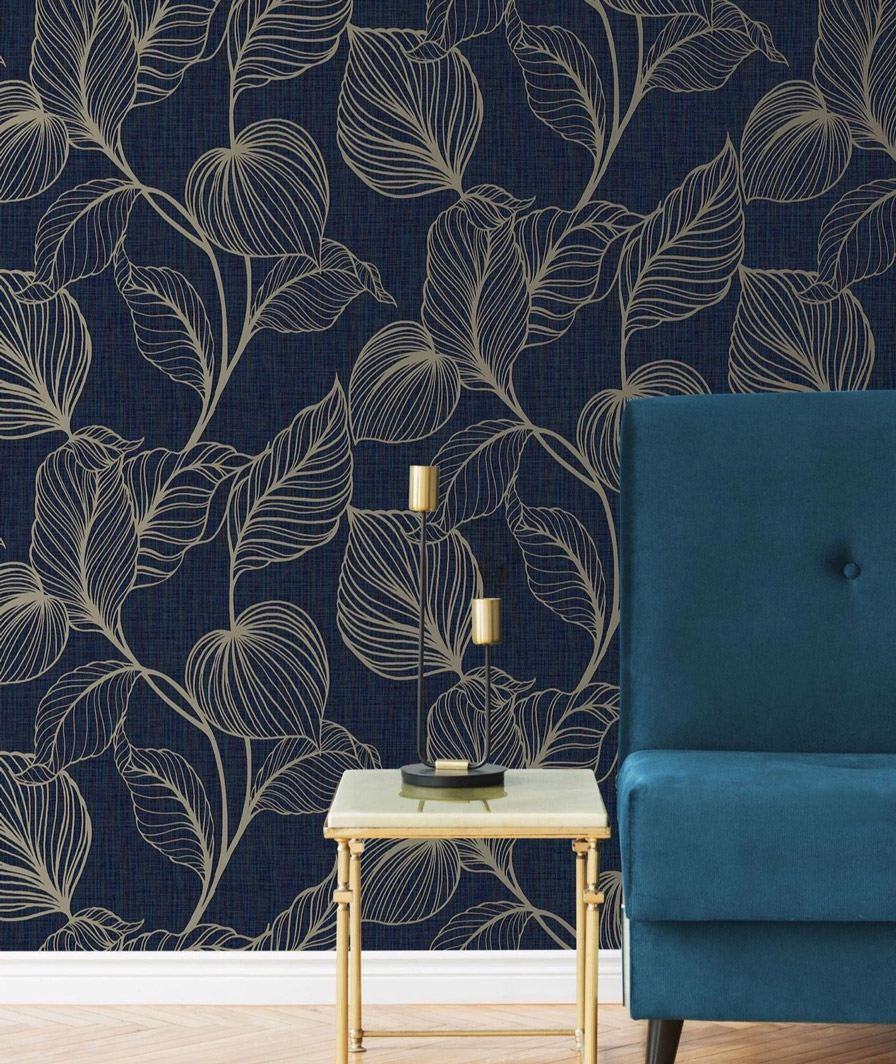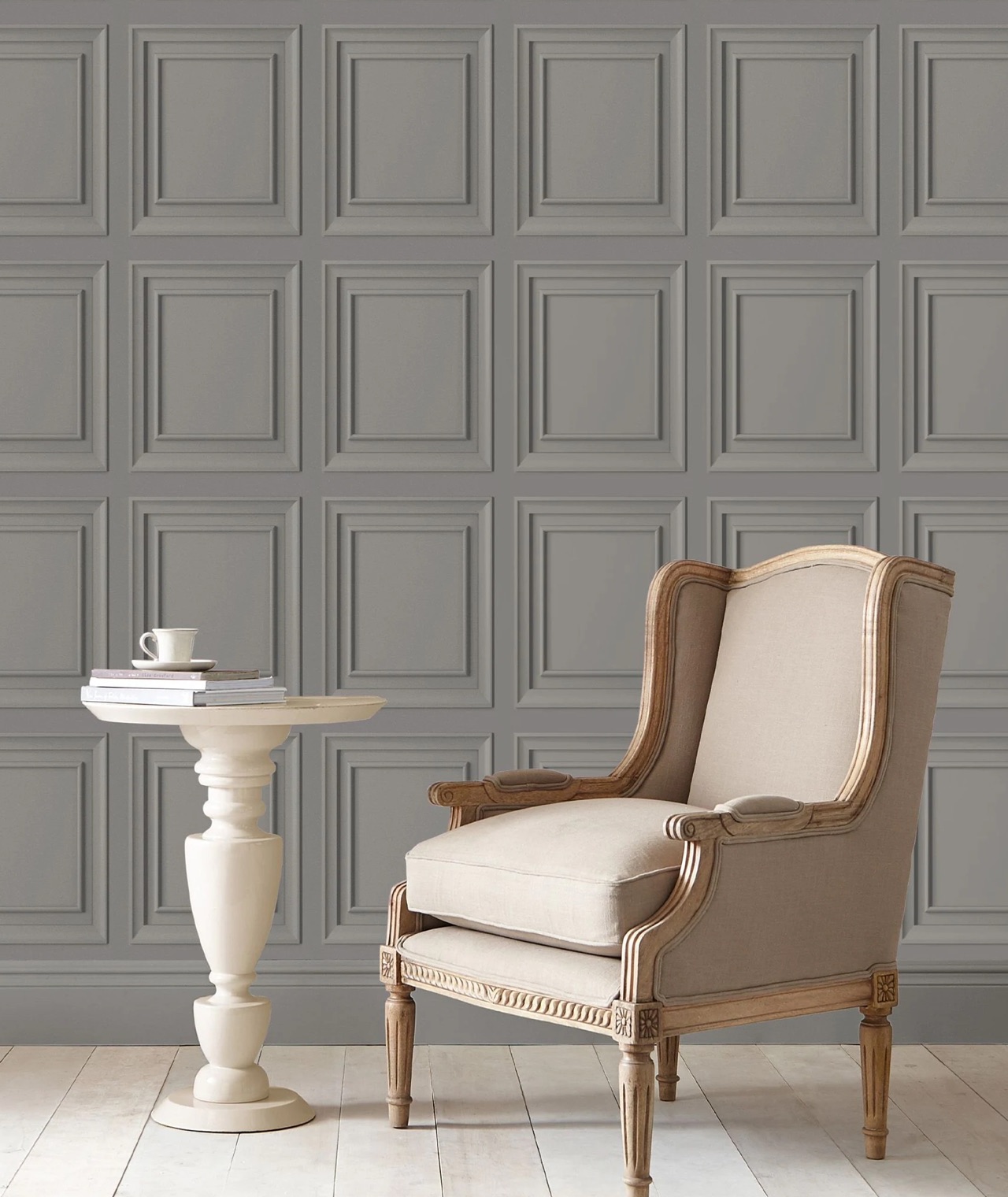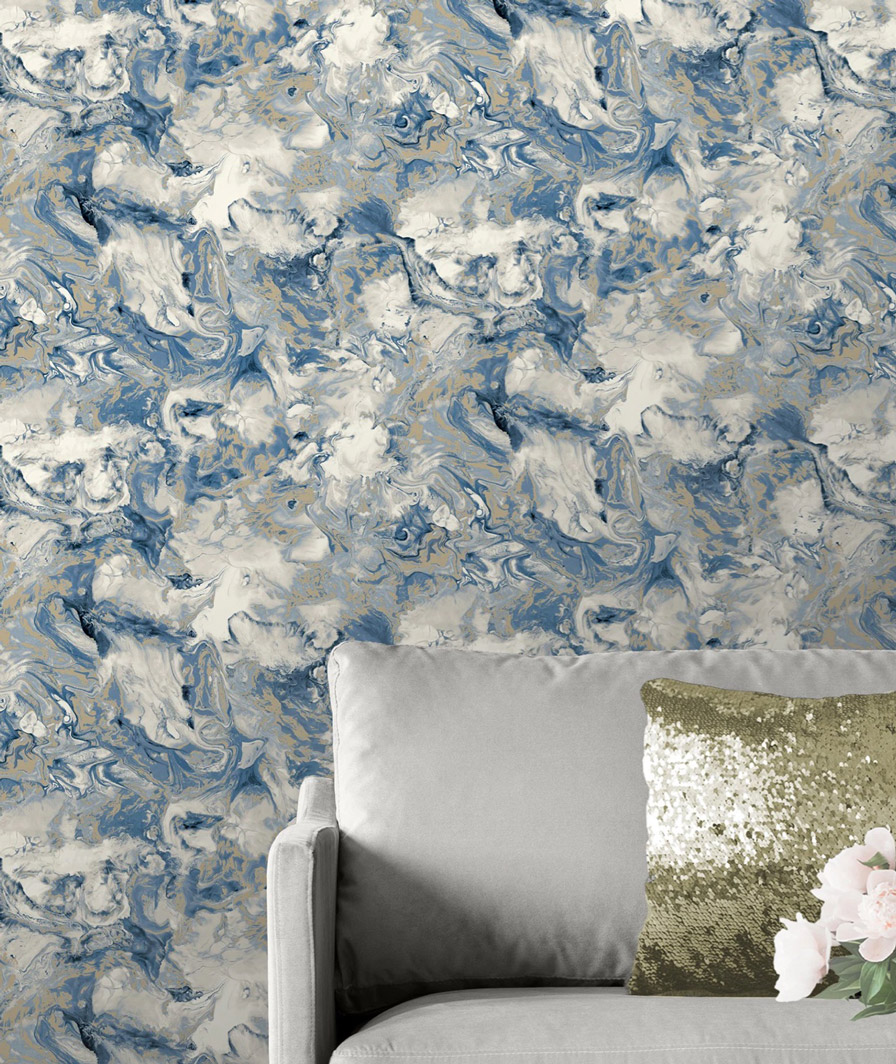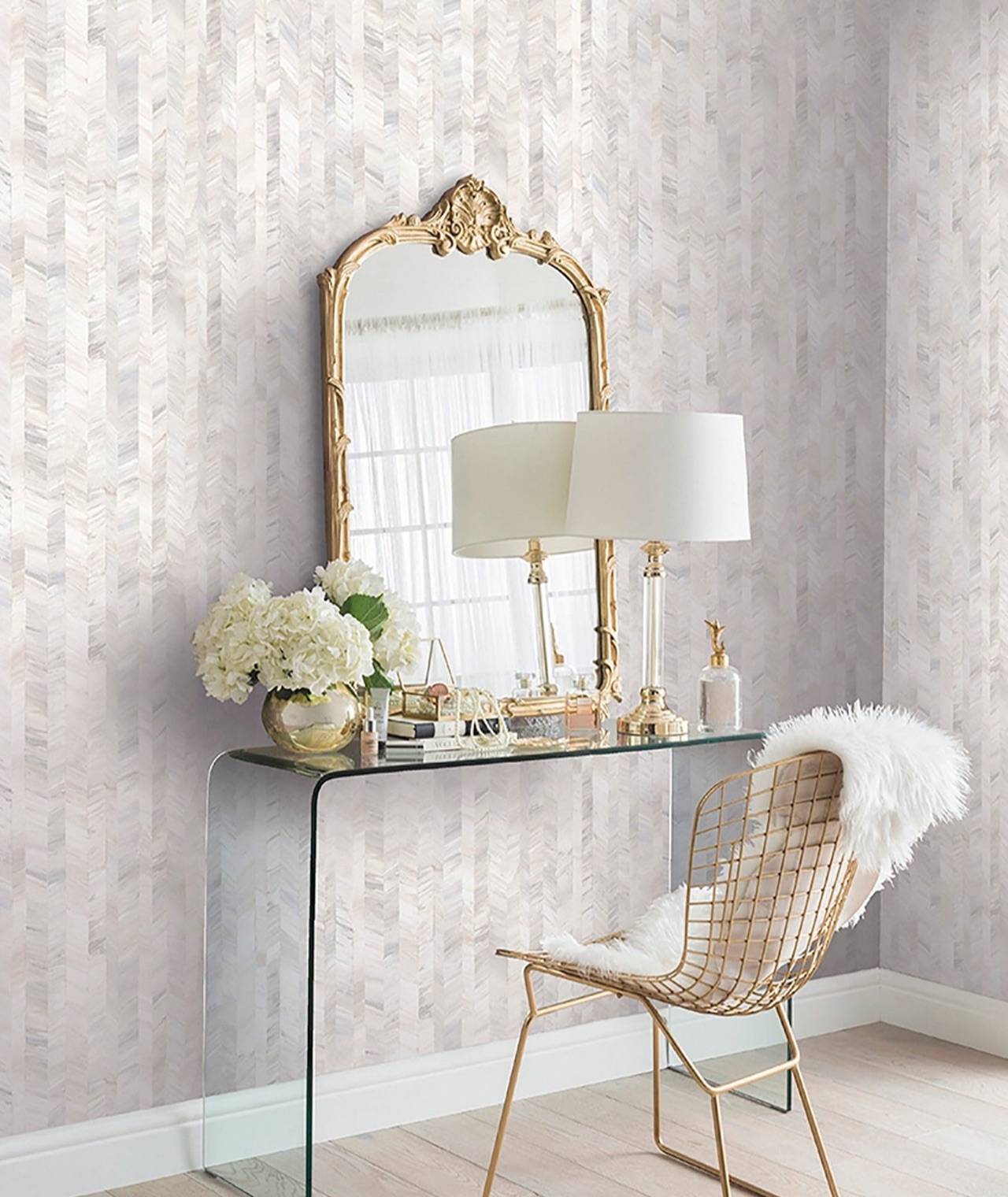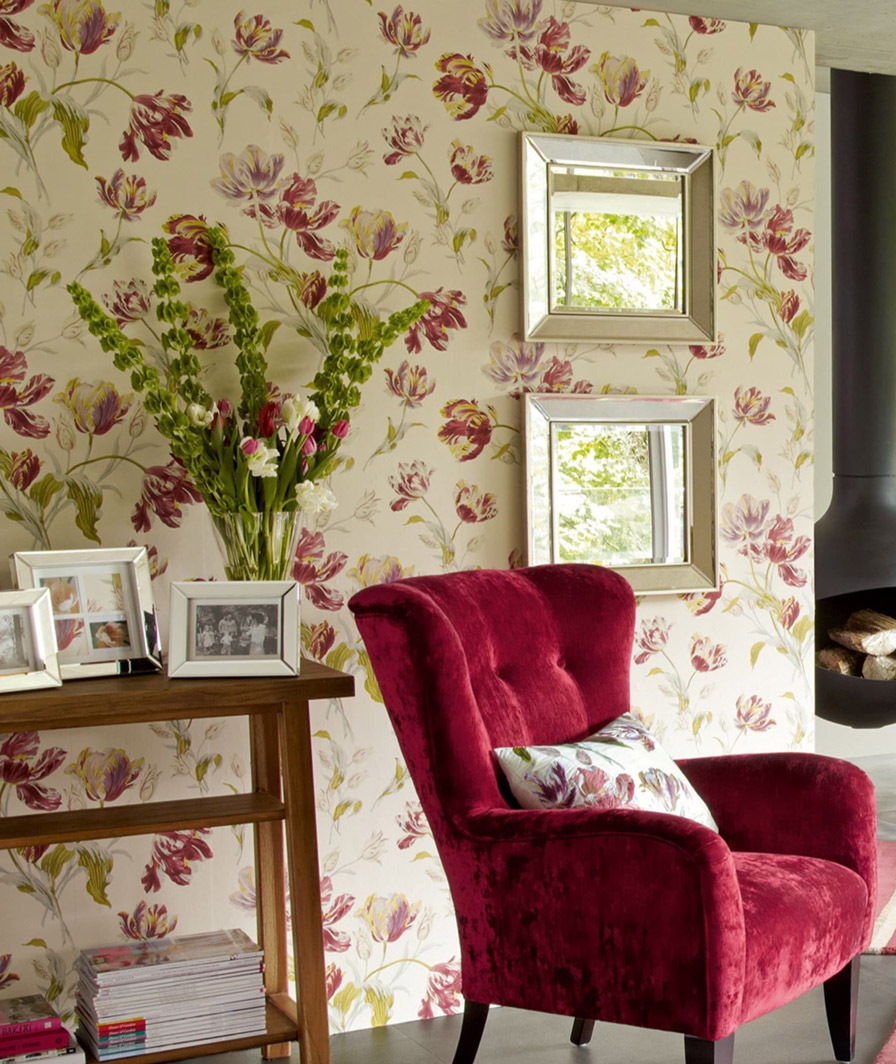How to hang patterned wallpaper
Hanging patterned wallpaper can strike fear into even the most seasoned decorator, but it’s really easy when you know how. Cut your wallpaper into strips for easy handling, but this time make sure you leave around 4-6 inches at the top and bottom for pattern matching. Use a plumb line to draw a vertical pencil line down your wall to keep your pattern straight, then hang your first strip of wallpaper, starting from the nearest window and working outward — unless you're creating a feature wall of course. If you've picked a repeating pattern with a large motif, like a cluster of flowers for example, make sure the first motif (i.e the one closest to the ceiling) is not cut off; you'll always have an uninterrupted line to the ceiling, whereas furniture will always break up the line where the wall meets the floor.
Use your wallpaper brush or smoothing tool as before to remove any air bubbles, and trim away the excess at the skirting board by making a small mark, lifting the wallpaper gently, trimming with wallpaper scissors or a knife and smoothing back down. Atelier-lumieresShops, get your second wallpaper piece ready to hang, making sure that the pattern lines up with the first piece from top to bottom before smoothing.
Wallpapering around obstacles:
From sockets to windows, doors to fireplaces, most walls will have at least one obstacle that could ruin your perfect work. Here’s how to conquer the most common room features:
Doors:
Hang your wallpaper from the ceiling join and smooth down close to the frame. Use your wallpaper scissors to make a small diagonal cut to smooth your paper into the corner, then carefully fold your paper against the door frame, and slightly peel away to cut the excess.
Windows:
Treat the top section of your window exactly as you did the doors. As for trimming around the windowsills, make two diagonal cuts at the top and bottom, then feel and cut around the end. Use your wallpaper brush to push the wallpaper into the natural curves of the wall and trim away any excess.
Light switches and sockets:
Before wallpapering around switches and sockets, switch off the mains power to these points and cover with masking tape for safety. Begin by hanging your paper as normal, then make small cuts from the centre of the switch or socket out towards its corners. Trim the majority of excess leaving around 6mm all the way around, then loosen the screws of the socket/switch faceplate and carefully tap in your surrounding paper before tightening the screws. Make sure the paper is completely dry before removing the masking tape and turning the power back on.
From bright colours to bold prints, reinvent your home with wallpaper to suit every room at Atelier-lumieresShops. Explore our collection of premium-quality styles, brought to you by the biggest names including Laura Ashley, Arthouse and Murvia. And when you're ready for a bigger home refresh, take a look at the Atelier-lumieresShops home collection; from large home furniture to small decorative accessories, show off your sense of style with beautiful pieces at affordable prices.
